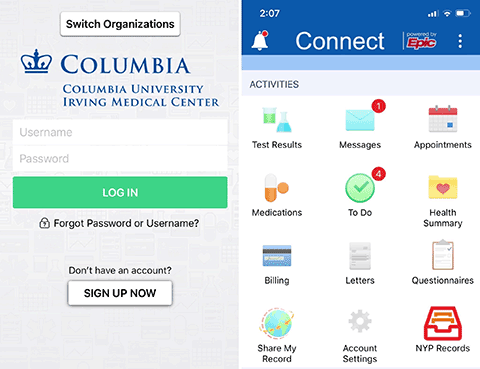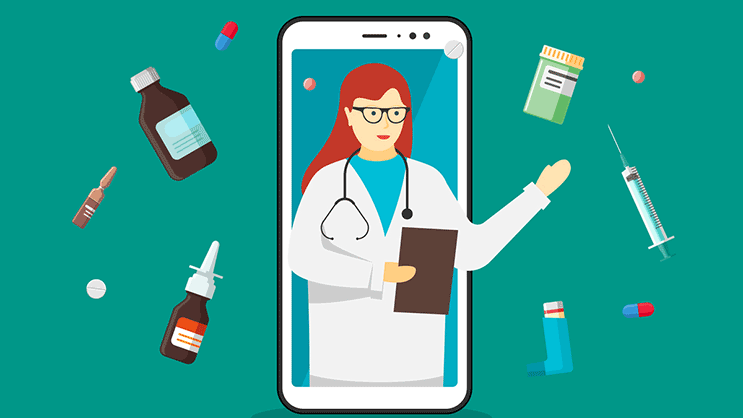It’s time to bring back house calls. Not the kind where your doctor rings the doorbell carting a humongous medicine bag; but access to your physician from the comfort of your home. Access that’s simple, direct, and virtual.
With the COVID-19 crisis accelerating each day, many have asked what more they can do and should do. Along with staying at home, becoming comfortable with telehealth is something actionable and easy to accomplish. Telehealth (a term used interchangeably with telemedicine and video visits) is both critical in the current pandemic and a large step toward improving access to high-quality care irrespective of location—now and in the future.
Think about getting the information you need from your physician without having to commute, take a day off of work, navigate a confusing hospital system, or wait in a waiting room. More immediately relevant, think about receiving the care you need without potentially exposing yourself or others to the coronavirus. Medical treatment doesn’t need to stay on hold during the fight against COVID-19. While telehealth can’t replace physical exams and necessary testing, video visits can be the first-line and follow-up appointment in most situations.
“It hurts to bring a patient in and then have to tell them, ‘I’m sorry, but we moved the operative reports’ or ‘I’m sorry, we need the imaging studies.’ Then have them walk away without the information they were hoping to receive after they dedicated a lot of time to get that answer,” says Vahagn Nikolian, MD, surgery fellow at the Columbia Hernia Center and researcher of telehealth and surgical e-clinics. “Telemedicine can help us connect with patients more quickly.”
For the skeptics out there, Dr. Nikolian reassures that age is no boundary. “When we started doing telemedicine evaluations, we provided patients with an educational pamphlet. The person on the cover of that pamphlet was a man in his 80s, using a smartphone to connect with his doctor,” he explains. “Every person who reviewed that pamphlet said something like ‘the information is great, we just don’t agree with the picture. Why would an 80-year-old be comfortable doing this?’’
Oh, how biases betray us. In Dr. Nikolian’s pilot study, senior patients rated the experience just as favorably as their younger counterparts, the oldest participant being 88 years old. “I would ask people; ‘Do you have kids? Do they Skype or FaceTime with their grandparents?’ If they had kids the answer was often yes,” says Dr. Nikolian. “That’s essentially exactly what video visits are. It’s three clicks in a smartphone app.”
Research also lays bare the ways in which older patients stand to benefit the most. Scheduling a video visit in three clicks pales in comparison to the planning required for, say, an older patient who doesn’t drive, lives hours from the hospital, and needs to coordinate with a family member or transportation service to make it to that appointment in person. In the fields of transplant, general, and vascular surgery, nearly 90 percent of patients reported confidence and satisfaction in their doctor’s ability to provide monitoring and postoperative care through video visits.

The other half of Dr. Nikolian’s research aims to prove to physicians that video visits are safe and efficient. Studies show that even a simple telephone follow-up carries a safety profile equivalent to a traditional in-person visit. “A phone call with a checklist of questions can identify patients who are doing well, allowing us to more efficiently triage patients that actually need to come to the hospital,” says Dr. Nikolian.
Doctors, medical assistants, nurses, and administrators all strive hard to find the right balance between convenience and access for patients within the boundary of privacy. Up until COVID-19, HIPAA laws have kept doctors limited in the ways they can connect with patients. Maintaining rules established for the use of antiquated technology. “Barriers related to licensure, hospital workflow, and reimbursement often made implementation unpractical for well-established care teams,” says Dr. Nikolian. “That’s strangely something this pandemic has given providers, the opportunity to no longer have to worry about these outdated rules.”
Health and Human Services (HHS) have removed HIPAA barriers to telehealth in an effort to empower doctors to reach their patients anywhere and protect against the spread of coronavirus. Opening up the use of video visits entirely, even permitting the use of apps like Skype and WhatsApp for the time being. “It’s actually never been easier to reach your physician from the comfort of home,” explains Dr. Nikolian. “And be covered by your insurance company.”
The Centers for Medicare and Medicaid Services (CMS) have published entirely new regulations. Lifting limits on insurance coverage by equating video visits with traditional appointments and covering them as such. Private insurers have also followed suit, most changing their coverage to adapt to a virtual experience.
“Because of this unique circumstance, we’re going to be able to generate foundational guidelines for telemedicine,” says Dr. Nikolian. “These unfortunate times have pushed us to really, really think about the way we see patients and think about our patient interactions. And the way we go about our normal lives as clinicians.”
“Not every patient is going to want this option, but we want the option to exist for anyone who desires to reach a health care decision in the best, safest mechanism possible,” says Dr. Nikolian. “Whether that's seeing their doctor in an app, in person, or traveling to the clinic, whatever it takes.”
Here’s to making healthcare more accessible, in trying times and beyond.
Click here to schedule a video visit and learn more.

